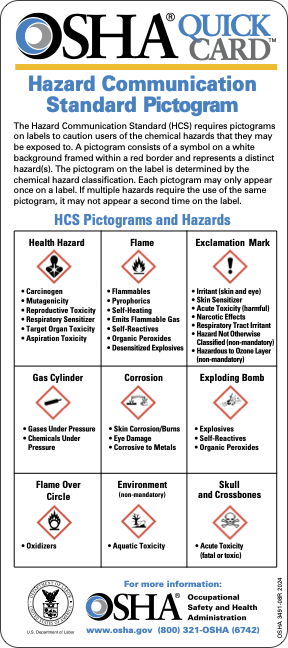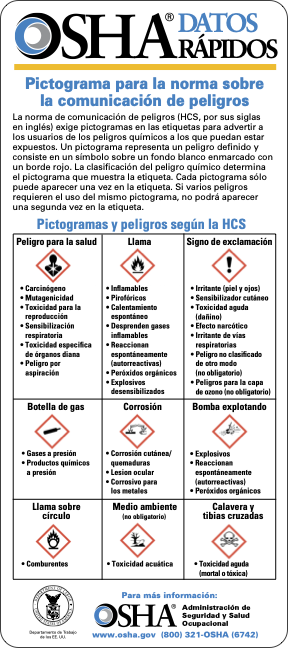This month, we’re exploring an important aspect of workplace safety: Hazard Communication Standards, often abbreviated as HazCom. Established by the Occupational Safety and Health Administration (OSHA), these standards play an important role in protecting employees from potential hazards posed by chemicals in the workplace.
What are HazCom Standards?
HazCom standards are designed to ensure that employers and employees are well-informed about the hazardous chemicals they work with and how to handle them safely. Whether you’re in manufacturing, healthcare, or any industry that deals with chemicals, understanding HazCom is essential for maintaining a safe working environment.
Key Elements of HazCom Standards
- Chemical Classification: Hazardous chemicals are classified based on their potential health and physical risks. This classification helps employers and employees understand the risks associated with each chemical.
- Safety Data Sheets (SDS): Each hazardous chemical must have a Safety Data Sheet (SDS) that provides detailed information on its properties, hazards, safe handling procedures, and emergency measures. SDS are vital resources for ensuring safe chemical management.
- Labeling Requirements: You must label containers of hazardous chemicals with specific hazard warnings, including product identifiers, signal words (such as “Danger” or “Warning”), hazard statements, precautionary statements, and pictograms. Clear and accurate labeling is critical for identifying potential hazards at a glance.
- Employee Training: Employers are responsible for providing employees with training on the hazards of chemicals present in their workplace. This training covers topics such as how to interpret labels and SDS, proper handling practices, and emergency response procedures. Well-trained employees are better equipped to protect themselves and others from chemical hazards.
- Written Hazard Communication Program: Employers must develop and implement a written Hazard Communication Program that outlines how they will comply with HazCom standards. This program should detail procedures for labeling, SDS management, employee training, and handling trade secrets related to chemical information.
Why It Matters
Compliance with HazCom standards isn’t just about following regulations—it’s about safeguarding the health and well-being of everyone in the workplace. By understanding and adhering to these standards, employers can minimize chemical exposure risks, accidents, and injuries. Employees can now work confidently, knowing that their safety is a top priority.
Get Involved
Are you up to date with HazCom standards in your workplace? Take the initiative to review SDS, participate in training sessions, and familiarize yourself with chemical labels. If you have questions or concerns, don’t hesitate to reach out to your employer or safety representative.
Stay Informed
Staying informed about HazCom standards is essential as regulations and best practices evolve. Regular updates and training sessions ensure that your knowledge remains current, and your workplace remains safe.
Remember, when it comes to HazCom, knowledge is power, empowering you to work safely and confidently with hazardous chemicals. Let’s continue to prioritize safety in every aspect of our work environment!
Stay safe and informed.
https://www.cpwr.com/training/training-programs/hazard-communication/



